Meal planning sounds complicated, but it doesn’t have to be. When done right, it saves time and money, reduces food waste, and keeps you from reaching for unhealthy last-minute options. Whether you’re cooking for one, feeding a family, or trying to stick to a budget, a little planning goes a long way. Let’s break it down into easy steps and helpful ideas that work for any situation.

This site includes affiliate links; you can check the disclosure for more details.
Start with What You Have
Before making a plan, check your pantry, fridge, and freezer. It’s surprising how much you can build from what you already own. This step cuts costs and ensures nothing goes bad. Start with a quick inventory and make a list of what you find.
- Look for ingredients close to expiring, like fresh produce or dairy items.
- Base your meals on staples like rice, pasta, or canned goods. These items create a strong foundation for nearly any dish.
- Combine unexpected ingredients. For example, leftover tortillas can become quesadillas or a base for breakfast wraps.
- Keep track of freezer items. Frozen vegetables, meat, or bread are lifesavers when you’re short on time.
- Avoid overbuying. Stick to what you know you can use, especially for fresh items.
By starting with what you have, you’ll make better use of your groceries and reduce waste, which saves money and time.
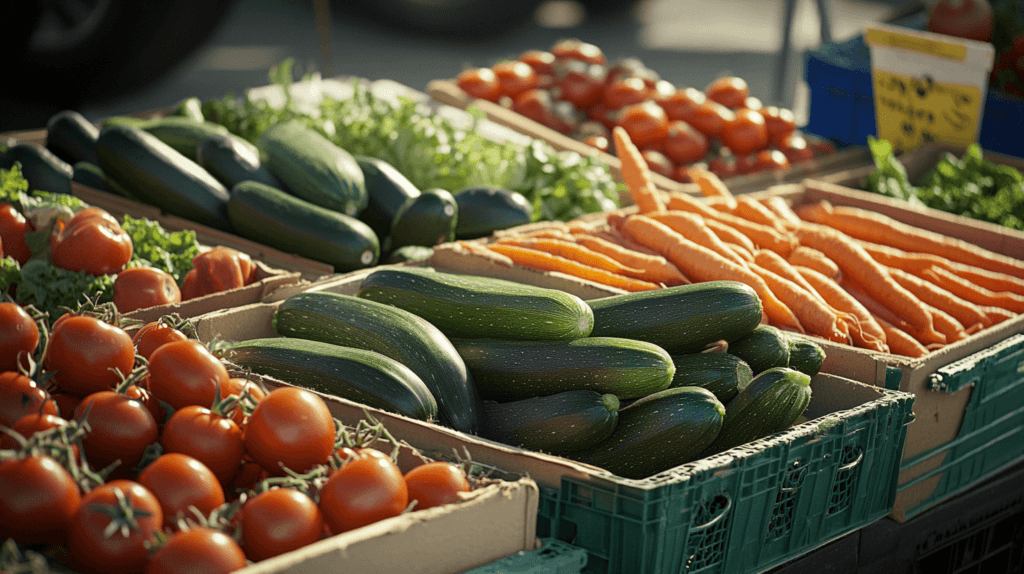
Keep It Budget-Friendly
Planning meals on a budget doesn’t mean sacrificing flavor or variety. The key is to shop smart and stretch ingredients. Focus on high-value, affordable foods that go a long way in multiple meals.
- Buy in bulk: Grains, beans, and pasta often cost less in larger quantities and store well.
- Shop seasonal produce: Fruits and vegetables in season are cheaper and have better flavor. For example, apples in fall or zucchini in summer.
- Use store brands: These often provide the same quality as name brands at a lower cost.
- Plan for leftovers: Make recipes that taste great the next day, like chili or casseroles. Leftovers are perfect for lunches or a quick dinner.
- Minimize waste: Repurpose ingredients. Turn roasted chicken into soup, or use leftover rice in stir-fries.
Budget-friendly meal planning is about maximizing what you buy and minimizing what you throw away.

Healthy Meal Planning Tips
Healthy eating starts with smart planning. It’s easier to make nutritious choices when your meals are prepared ahead of time. A little planning ensures your meals are balanced and satisfying.
- Balance your plate: Include a mix of protein, vegetables, and whole grains in every meal. For example, grilled chicken, quinoa, and steamed broccoli make a simple and healthy dinner.
- Prep ahead: Wash, chop, and store fruits and vegetables as soon as you get home from the store. It makes healthy snacks and meal prep faster.
- Limit processed snacks: Homemade options like baked veggie chips, granola bars, or trail mix are healthier and often cheaper.
- Use herbs and spices: Add flavor to meals without relying on salt or heavy sauces. Fresh herbs, garlic, and spices can make simple dishes exciting.
- Plan lighter options: Salads, soups, and vegetable-based meals are great for busy nights or when you want something easy to digest.
A well-balanced plan supports your health goals and keeps you energized throughout the day.
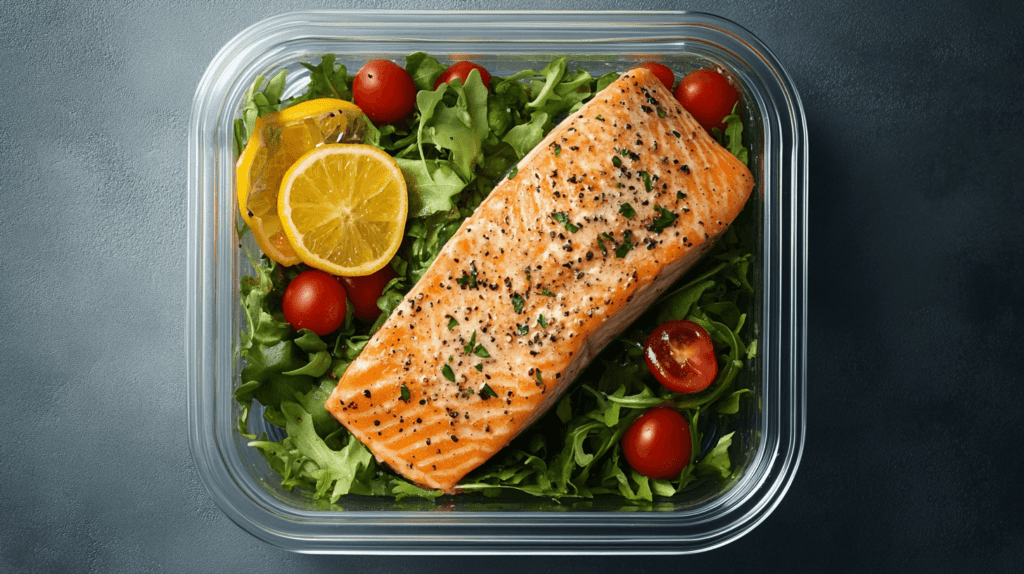
Ideas for Solo Meal Planning
Cooking for one might feel like a hassle, but it can actually be fun and rewarding. With the right approach, you can make meals that are quick, cost-effective, and perfectly portioned for one.
- Batch cooking: Prepare meals like chili, soup, or pasta sauces that you can freeze in single servings. It saves time and ensures you always have something ready.
- Mix and match: Roast a variety of vegetables and proteins at the start of the week. Combine them into different dishes like bowls, salads, or wraps.
- Simplify breakfast: Overnight oats, yogurt parfaits, or smoothies are perfect for busy mornings. Prep them in advance for grab-and-go convenience.
- Focus on versatility: Buy ingredients that can work in multiple recipes. For instance, spinach can go into salads, smoothies, or pasta.
- Minimize waste: Use small portions of perishable items. For example, freeze half a loaf of bread or buy single servings of fresh produce.
Cooking for one can be efficient and enjoyable when you plan meals that suit your schedule and taste preferences.
Family-Friendly Meal Planning
Feeding a family can feel overwhelming, especially with different tastes to consider. The secret is to choose meals that are versatile, easy to customize, and crowd-pleasers.
- Theme nights: Establishing weekly themes like Taco Tuesdays, pasta Thursdays, or pizza Fridays adds fun and predictability to your meal plan.
- DIY meals: Encourage kids to build their own wraps, sandwiches, or salads. Providing a variety of toppings ensures everyone gets what they like.
- Casseroles: These are excellent for sneaking in extra vegetables and prepping ahead. Think lasagna, shepherd’s pie, or baked ziti.
- One-pot dishes: Meals like stews, stir-fries, or skillet dinners save time and dishes while offering rich, comforting flavors.
- Kid-friendly sides: Include options like fruit slices, carrot sticks, or homemade sweet potato fries to keep meals balanced.
Family-friendly menus make mealtime smoother by catering to everyone’s preferences without doubling your workload.
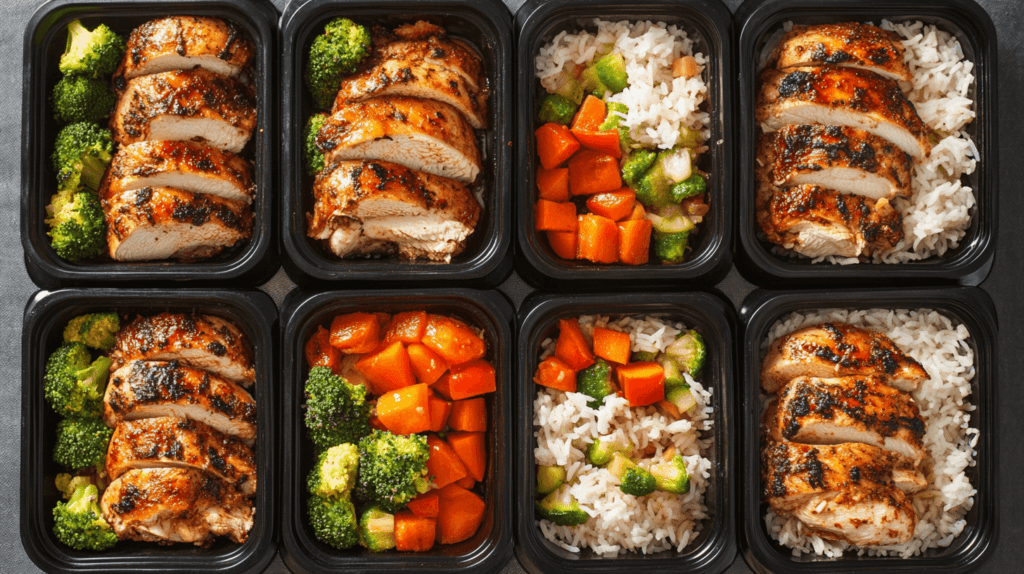
Making Meal Prep Easier
Meal prepping is a lifesaver for busy weeks. With a little effort upfront, you can enjoy stress-free meals and snacks all week long.
- Set aside a prep day: Dedicate a few hours on a weekend or free evening to cook and portion meals for the week.
- Cook staples in bulk: Make large batches of rice, quinoa, or roasted vegetables. Use these as bases for multiple meals.
- Portion meals: Divide meals into containers for grab-and-go convenience. Clear containers help you see what’s inside.
- Use versatile proteins: Prepare chicken breasts, ground turkey, or tofu that can be added to different dishes.
- Label meals: Add dates to containers so you know which to eat first. It’s a simple step that prevents waste.
With these tips, you’ll spend less time cooking and more time enjoying your meals.
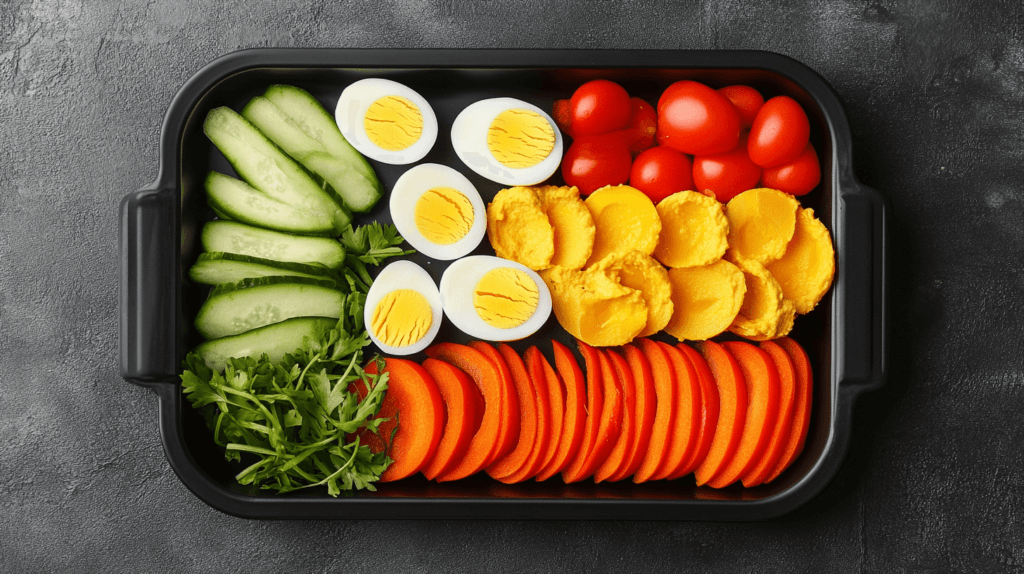
Snack Ideas to Add to Your Plan
Snacks often derail meal plans, but having healthy options on hand makes a big difference. Keep snacks simple, portable, and satisfying.
- Sliced veggies with hummus: Carrots, celery, or bell peppers pair perfectly with a protein-rich dip.
- Hard-boiled eggs: These are easy to prep and provide a filling protein boost.
- Greek yogurt with honey: Add a sprinkle of granola for texture and flavor.
- Air-popped popcorn: A whole-grain snack that’s light yet satisfying.
- Mixed nuts or trail mix: A handful provides healthy fats and keeps you energized.
- Homemade energy bites: Combine oats, peanut butter, and a touch of honey for a sweet and healthy treat.
Planning your snacks ensures you’ll have better choices when hunger strikes.
Drinks to Pair with Your Meals
Don’t forget to plan for drinks. It’s easy to default to sugary sodas or juices, but healthier options can be just as satisfying.
- Infused water: Add fruit or herbs like mint, cucumber, or berries for a refreshing twist.
- Iced tea: Brew your own and sweeten lightly with honey for a natural flavor boost.
- Smoothies: Blend fresh fruit, greens, and a protein source like yogurt or almond butter.
- Sparkling water: Add a splash of juice for a bubbly, low-sugar drink.
- Homemade lemonade: Use fresh lemons and a touch of honey for a tangy treat.
Healthy drinks add variety and keep you hydrated without the extra sugar.
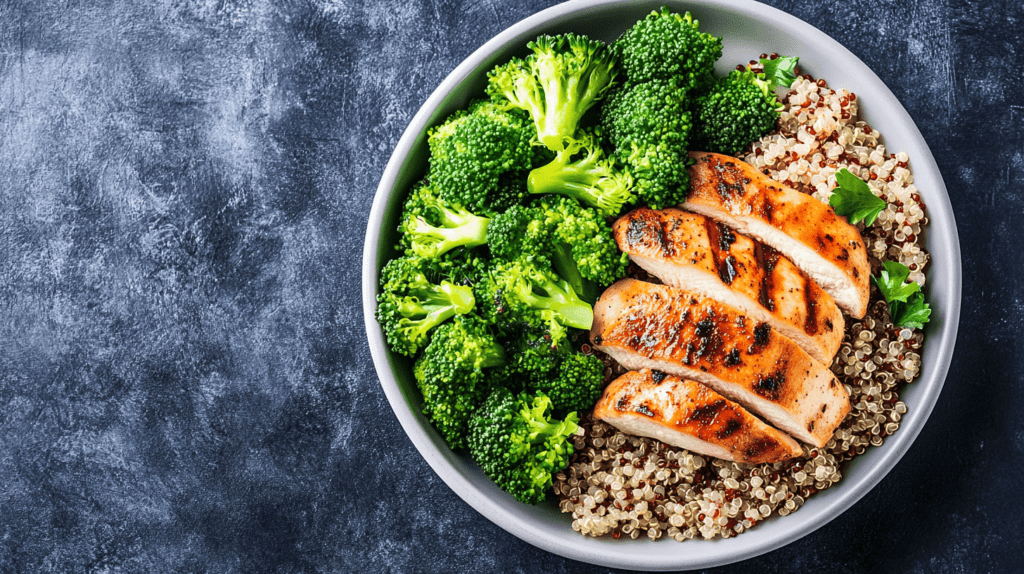
Meal Planning on a Tight Budget
When money is tight, every dollar counts. Stretch your food budget by focusing on affordable, nutritious ingredients that offer plenty of versatility.
- Stick to basics: Pantry staples like rice, beans, oats, and eggs are affordable and filling.
- Choose cost-effective proteins: Options like canned tuna, lentils, or chicken thighs pack nutrition without breaking the bank.
- Make soups and stews: These are perfect for using up odds and ends from your fridge while creating a hearty meal.
- Plan meatless meals: Pasta primavera, vegetable stir-fries, or bean-based tacos are satisfying and economical.
- Shop the sales: Look for discounts on fresh produce and proteins. Freeze what you can’t use immediately.
Budget-conscious planning doesn’t mean sacrificing quality—it means making the most of every ingredient.
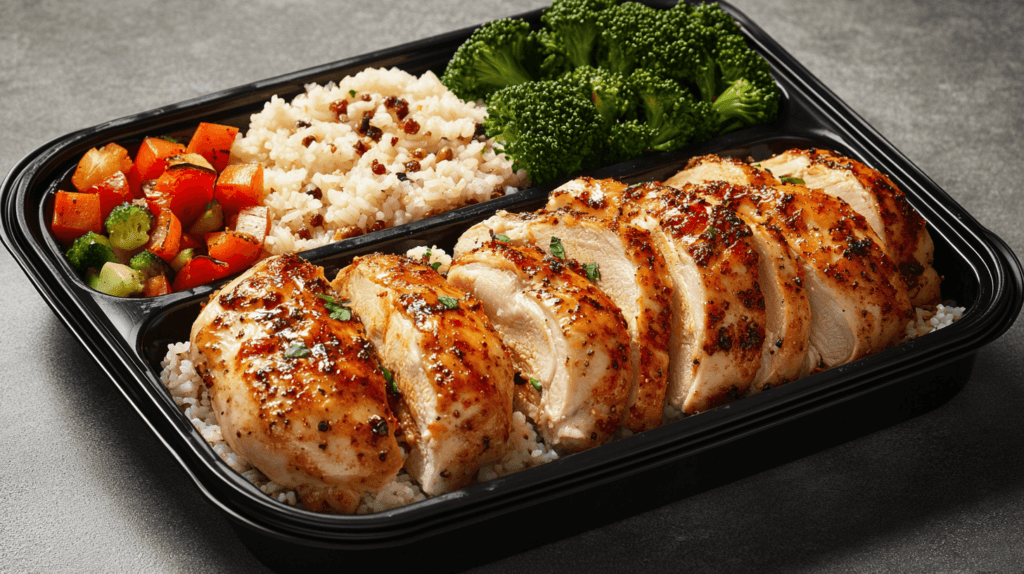
Keep It Flexible
Life happens, and plans change. Keep your meal planning flexible by building in a few “backup meals” that are easy to throw together in a pinch.
- Stock up on staples: Keep pasta, canned beans, and frozen vegetables on hand for quick meals.
- Have easy recipes ready: Think grilled cheese sandwiches, scrambled eggs with toast, or a quick vegetable stir-fry.
- Freeze extras: Make double batches of soups or casseroles and freeze portions for busy days.
- Plan “mix-and-match” nights: Combine leftovers into a new meal, like a stir-fry or grain bowl.
Flexibility ensures your meal plan works even when your week doesn’t go as expected.
Sample Weekly Menu
Here’s an example of a simple meal plan for a week that balances variety, nutrition, and ease:
- Monday: Chicken stir-fry with brown rice and steamed broccoli
- Tuesday: Tacos with black beans, fresh salsa, and shredded lettuce
- Wednesday: Spaghetti with marinara sauce and roasted zucchini
- Thursday: Grilled chicken salad with mixed greens and homemade vinaigrette
- Friday: Homemade pizza with your favorite toppings, like mushrooms and bell peppers
- Saturday: Vegetable soup made with seasonal produce, served with crusty bread
- Sunday: Leftovers or build-your-own bowls with rice, veggies, and proteins
This plan offers balance and flexibility, making it easy to adjust based on your needs.
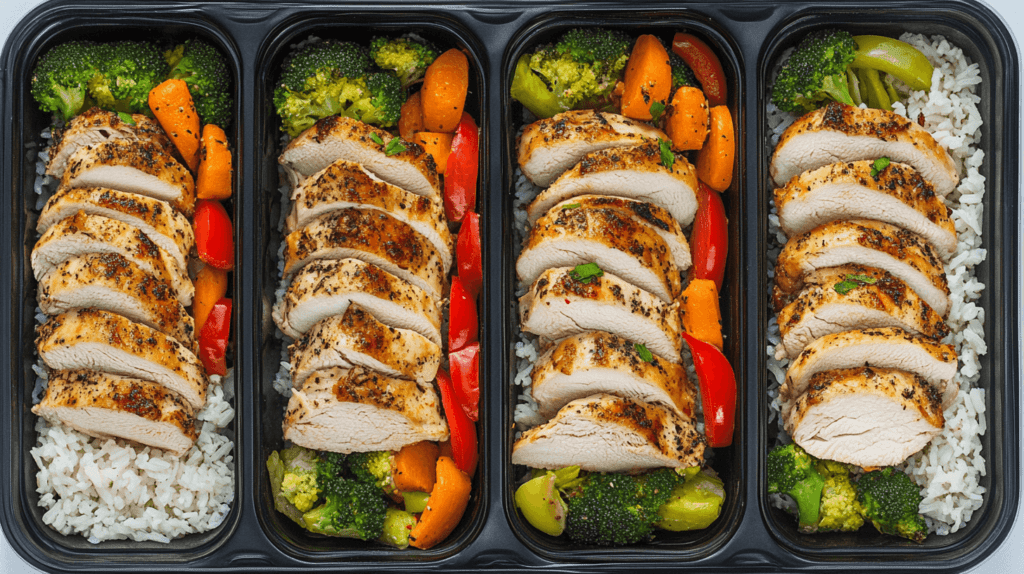
Weekly Meal Planning Printable
This meal planning printable is designed to help you organize your meals, reduce stress, and make grocery shopping more efficient. Use the template below to plan breakfast, lunch, dinner, and snacks for the week, while keeping track of ingredients you already have and creating a clear grocery list.
Weekly Meal Plan
| Day | Breakfast | Lunch | Dinner | Snacks |
|---|---|---|---|---|
| Monday | ||||
| Tuesday | ||||
| Wednesday | ||||
| Thursday | ||||
| Friday | ||||
| Saturday | ||||
| Sunday |
Grocery List
| Item | Quantity | Notes |
Tips for Using This Printable:
- Start with an inventory: Check your pantry, fridge, and freezer before filling out your meal plan. Use what you already have first.
- Plan versatile meals: Think about recipes that use similar ingredients to save money and reduce waste.
- Be realistic: Consider your schedule for the week. Plan for quick meals on busy days.
- Double up: Cook larger portions to enjoy leftovers for lunch or dinner the next day.
- Include snacks: Don’t forget to plan healthy snacks to keep you energized.
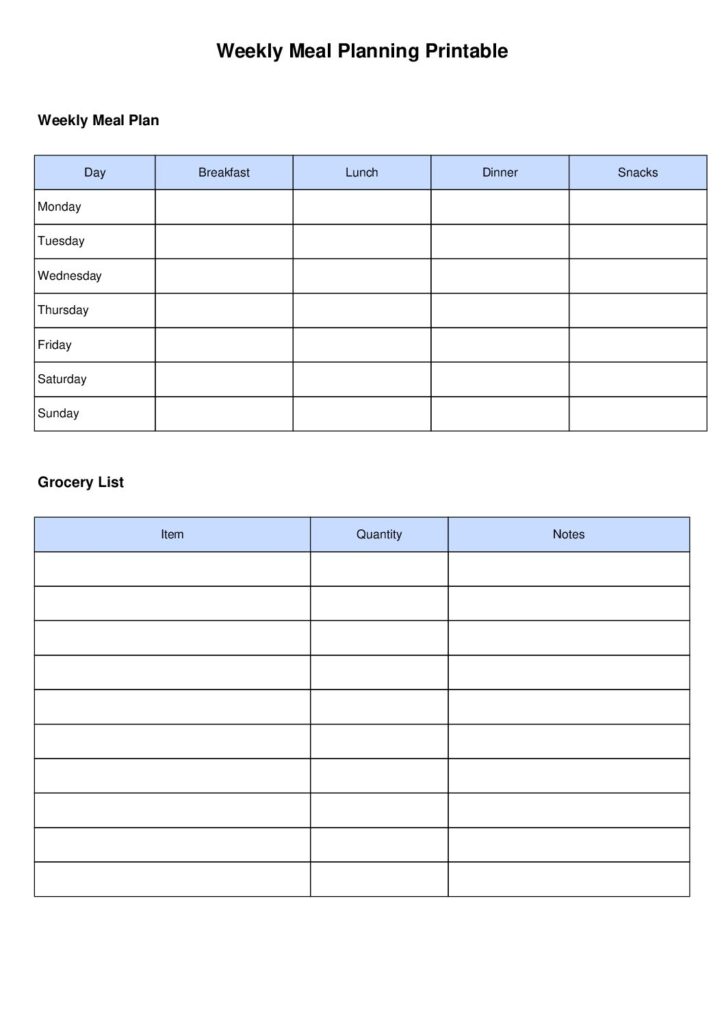
Small Changes, Big Impact
Meal planning doesn’t need to be perfect. Even small changes can lead to big results over time. Start with one or two planned meals a week and grow from there. Use what works for your lifestyle and tweak it as you go.
By keeping things simple and sticking to your budget, you’ll find meal planning is one of the best tools for managing your time and money. Plus, there’s nothing like the peace of mind that comes from knowing what’s for dinner.



